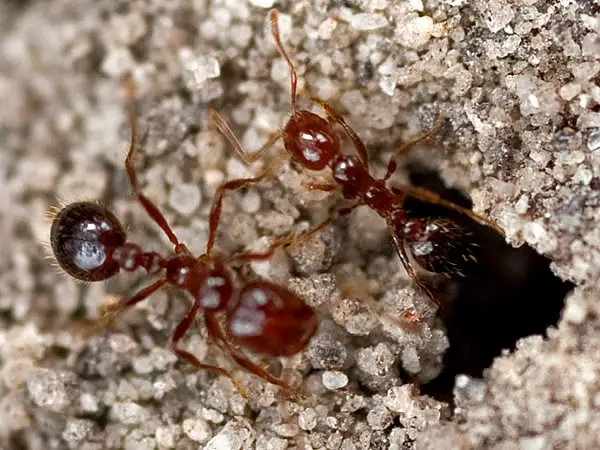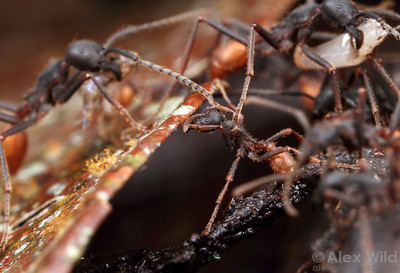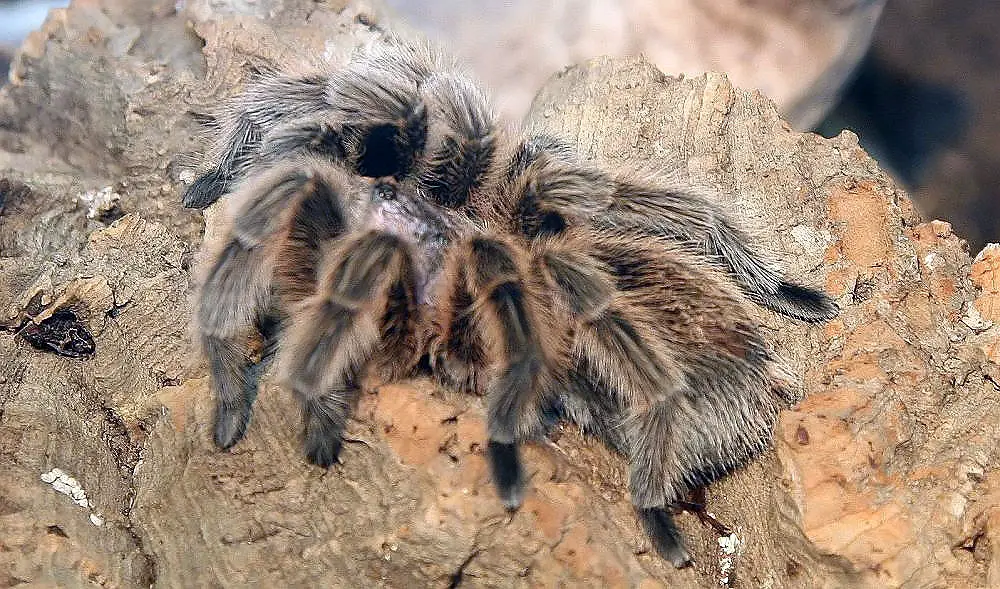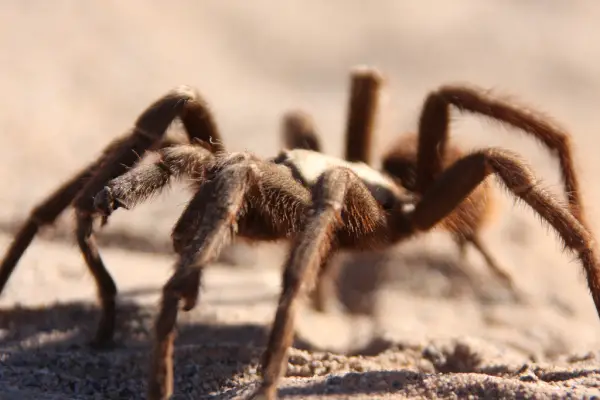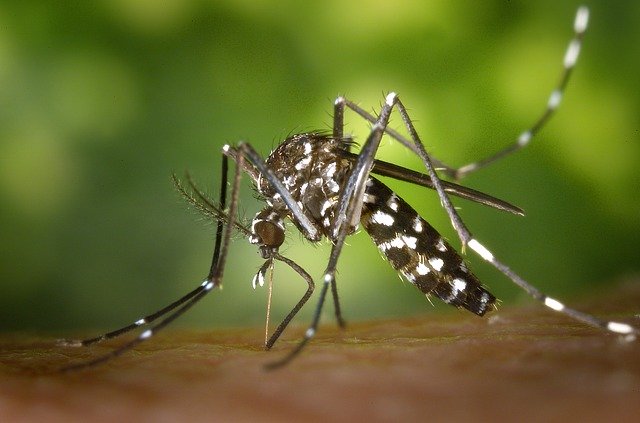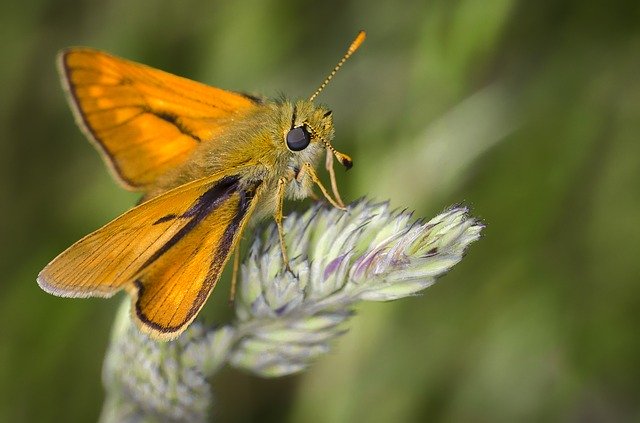The red imported fire ant (Solenopsis invicta) has long been known to the science since the early twentieth century. They are highly aggressive ants. If provoked, fire ants will come out of their nests and attack in large numbers. They are thought to consume dead animals and insects.
Red Imported Fire Ant Facts
Anatomy
- Fire ant workers grow to a length of 0.062 inch they seem more like southern fire ants.
- They are recognized by their reddish bodies but the last segment of the abdomen is shiny dark brown. Red imported fire ants have large eyes.
- Fire ants are unique in their nesting habits and behavior. They are nevertheless aggressive species.
Distribution
Red imported fire ants are distributed in large numbers in Australia, Philippines, Hong Kong, China, and United States.
Feeding Ecology & Diet
- Red imported fire ants do not only feed on dead animals but also on honeydew from aphids and soft scales. The captive ants are likely to eat fats, sweet foods and proteins.
- They will move in distinct trails and most importantly along sidewalks and sides of the building.
- Red imported fire ant’s diet also consists of some insects such as long-horned grasshoppers, spittle bugs, ground, beetles, and cucumber beetles. They like to consume spiders in the family of arthropods. Fire ants are less likely to feed on adult house flies, sting bugs, and ants.
- Unlike some of the larvae, many colony members feed on liquids.
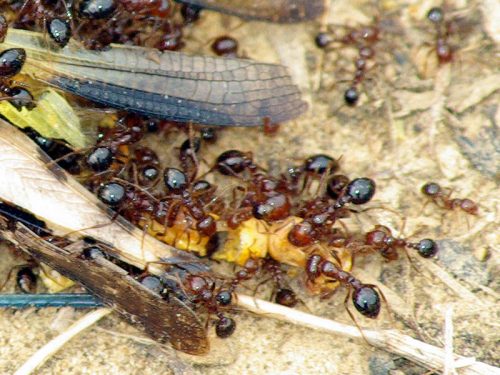
Behavior
- Fire ants construct nests that have more than one opening. They build nests near short water-bodies in lawn or soil.
- The mounds can be as high as 18 inches with the width measuring up to 24 inches. After 2 – 3 years, ant’s mounds may take a shape of a dome.
- In urban areas, their nests are found in crawl spaces, buildings or under carpets.
- A single colony may have as many as 500,000 worker ants. However as the ants grow in numbers, they join new colonies to move to an entirely new location.
- The older members of the colony take up the job to search food and nesting location because it’s a challenging task for they may expose to external enemies during foraging. This is a difficult job therefore one-fifth of the worker ants go out on a foraging journey.
- If an enemy comes face to face, fire ants may sting it to drive the predator off.
- Queen ants do not forage instead the smallest worker ants claim the task.
- There are subterranean tunnels in the nest through which the worker ants leave the nest. The outgoing ants hunt typically hunts alone.
- They are extremely territorial for they never allow outsiders into their foraging territory which is just around the mound. One of the best hunting grounds is weedy sugar-cane fields; on this field they change size every day. As compared to other territories, the sugar-cane field territory is smaller.
- Unique among fire ant’s behavior is that it raises its abdomen every time it faces an intruder. It does so when it must drive the competing ants away from a food source.
- Above all, red imported fire ants are remarkable foragers for they are known to bring about 50 food items per hour.
- Fire ants will also climb up the 30-feet high tree to bring down aphid excretions on the leaves. However on the soybean fields, they are more likely to stay on ground than in trees.
- Unlike thousands of males and a queen, only workers will go out to find food. The reason behind is that worker fire ants are efficient at stinging.
- In eth Galapagos Archipelago, red imported fire ants forage all throughout the day. Unlike in any other location, ants living in Hawaii are apt to forage even in the mid-afternoon.
- During floods, ants move to the high canopy of plants.
- Monogyne workers don’t seem to accept queen of other colonies and they often kill foreign queens if they see one.
- Pheidole megacephala is the fire ant’s natural enemy.
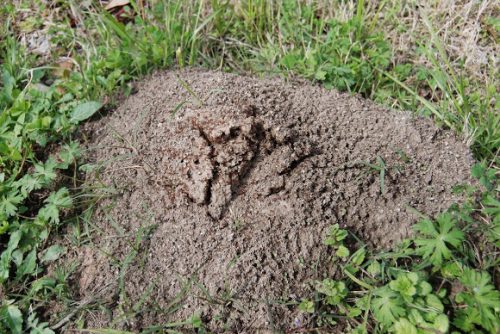
Reproductive Biology
- The reproductive behavior of red imported fire ants is one of the least understood behaviors and the complete mating process is rarely, in fact, never observed in the wild. Mating always occurs in the air and at a height of thousands of feet.
- The queen lands on the ground soon after mating and sheds her wings. Moments later she begins digging a nest. Male on the other hand dies.
- In northern Florida, the peak mating period occurs in April to the end of August.
- The fire ant’s queen is extremely vulnerable to predators and as such she must dig a nest for as quickly as possible.
- There are 15 eggs in the first batch while the larvae hatch in 6 – 7 days.
- The weight of the eggs is about 0.0051 mg with a diameter measuring 0.22 mm.
- A fire ant’s queen weighs up to 20 mg and it is thought to lay as many as 5,000 eggs.
- The duration of the eggs stage is 7 – 8 days.
- The ideal foraging temperature for fire ants is between 70 and 85oF.
- In the United States, fire ants colony attains the maturity at 2 years age.
- In Uruguay, the peak season for laying eggs ranges from January to March.

